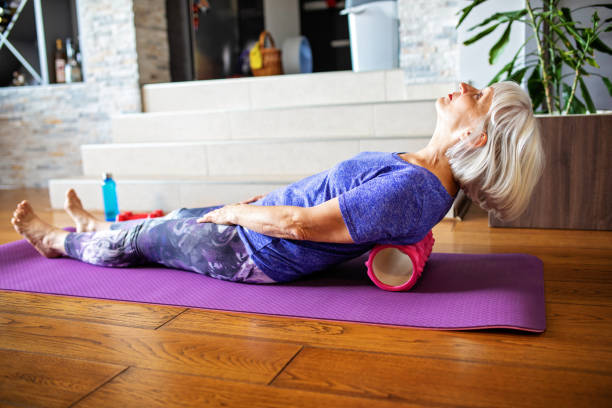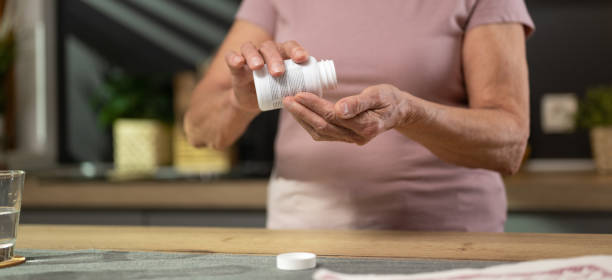As we age, the prevalence of chronic pain increases, often becoming a daily challenge for many seniors. This pain can arise from various sources, including arthritis, neuropathy, and musculoskeletal conditions. While medications can provide relief, they often come with side effects and do not address the root causes of pain. It is crucial to explore holistic approaches that can offer long-term relief and improve the quality of life for seniors.
Contents
The Limitations of Medication
Short-term Relief
Medications, particularly painkillers, are often prescribed for immediate relief. However, their effects are typically temporary, necessitating frequent use and potentially leading to dependency.
Side Effects and Risks
Long-term use of pain medications can lead to numerous side effects, ranging from digestive issues to increased risk of cardiovascular events. For seniors, who may already be managing multiple health conditions, the additional burden of medication side effects can be overwhelming.
Holistic Approaches to Pain Management
Physical Therapy
Physical therapy is a cornerstone of non-pharmacological pain management. Through targeted exercises and stretches, physical therapists can help seniors improve their strength, flexibility, and mobility, reducing pain and enhancing overall function.
Acupuncture
Acupuncture, an ancient practice rooted in Traditional Chinese Medicine, involves the insertion of thin needles into specific points on the body. This technique can help stimulate the body’s natural pain-relieving mechanisms and is supported by numerous studies as an effective treatment for chronic pain.
Chiropractic Care
Chiropractic care focuses on the diagnosis and treatment of musculoskeletal disorders, particularly those related to the spine. Chiropractors use manual adjustments and other techniques to alleviate pain, improve alignment, and enhance the function of the nervous system.
Mind-Body Techniques
Meditation and Mindfulness
Meditation and mindfulness practices can be powerful tools in managing pain. These techniques teach individuals to focus on their breath and be present in the moment, which can help them develop a more positive and accepting attitude towards their pain. Over time, this can lead to a significant reduction in the perception of pain.
Cognitive Behavioral Therapy (CBT)
CBT is a psychological intervention that helps individuals change their thought patterns related to pain. By addressing negative thoughts and promoting healthier coping strategies, CBT can help reduce the emotional burden of pain and improve overall well-being.
Lifestyle Modifications

Nutrition
A balanced diet plays a vital role in managing pain. Anti-inflammatory foods, such as fruits, vegetables, lean proteins, and whole grains, can help reduce inflammation and pain. Omega-3 fatty acids, found in fish and flaxseed, are particularly beneficial.
Regular Exercise
Engaging in regular physical activity is essential for managing chronic pain. Low-impact exercises like walking, swimming, and yoga can improve circulation, reduce stiffness, and enhance overall physical health. It is important for seniors to choose activities that they enjoy and that are appropriate for their fitness level.
Sleep Hygiene
Adequate sleep is crucial for pain management. Good sleep hygiene practices, such as maintaining a regular sleep schedule, creating a comfortable sleep environment, and avoiding caffeine and electronic devices before bedtime, can significantly improve sleep quality and reduce pain.
Alternative Therapies
Massage Therapy
Massage therapy can provide immediate relief for muscle tension and pain. It improves blood flow, reduces inflammation, and promotes relaxation. Regular sessions can contribute to a significant reduction in chronic pain.
Herbal Supplements
Herbal supplements such as turmeric, ginger, and willow bark have been used for centuries to manage pain. It is important to consult with a healthcare provider before starting any supplements to ensure they are safe and appropriate for individual health needs.
Creating a Personalized Pain Management Plan
Assessment and Goals
The first step in creating a personalized pain management plan is a thorough assessment by a healthcare professional. This assessment should include a detailed history of the pain, its triggers, and its impact on daily life. Based on this assessment, specific and achievable goals can be set.
Integrating Approaches
An effective pain management plan often incorporates multiple holistic approaches. For example, a combination of physical therapy, mindfulness practices, and dietary changes can provide comprehensive relief and improve overall health.
Monitoring and Adjusting
Regular follow-up appointments are essential to monitor progress and make necessary adjustments to the pain management plan. It is important to remain flexible and open to trying different approaches to find the most effective combination for each individual.
Conclusion
Holistic approaches to senior pain management offer a multifaceted solution that goes beyond medications. By integrating physical therapy, mind-body techniques, lifestyle modifications, and alternative therapies, seniors can achieve lasting relief from pain and improve their overall quality of life. This comprehensive, solution-oriented approach not only addresses the symptoms of pain but also enhances overall health and well-being. It is a pathway to living a fuller, more active life despite the challenges of chronic pain.
